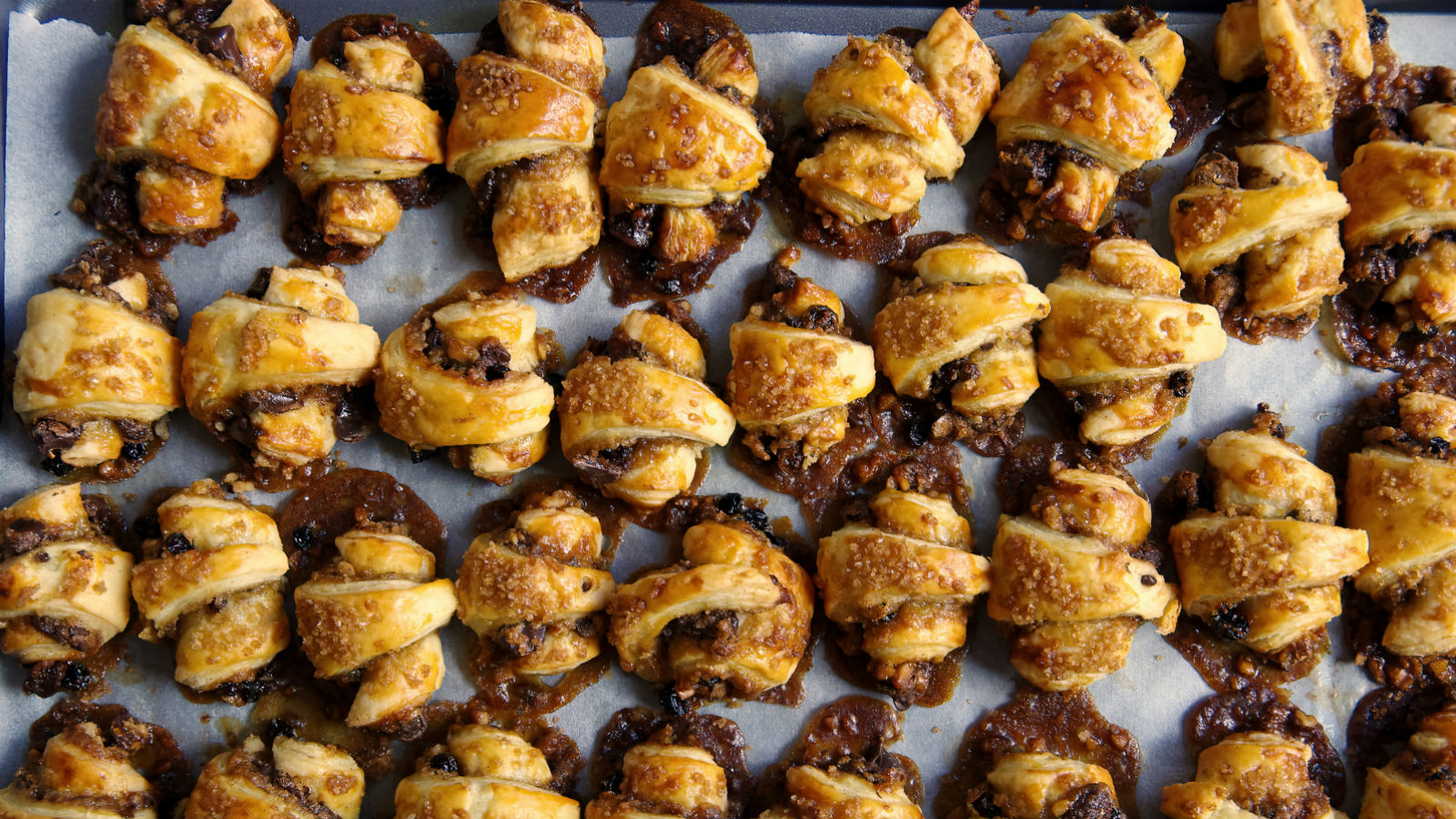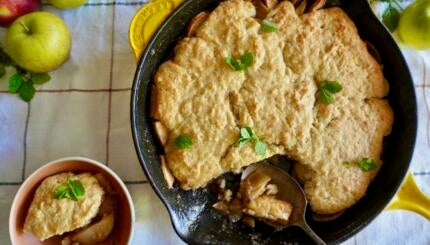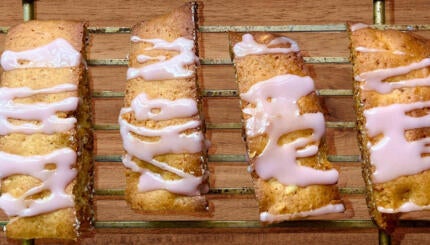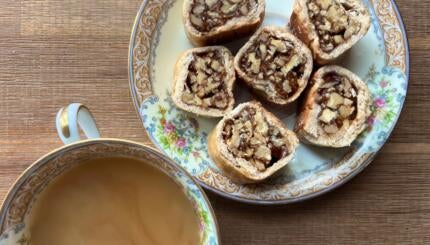I discovered my grandmother Henrietta’s 50-plus-year-old rugelach recipe while cleaning out my mom’s house after she passed away.
Henrietta had come to the U.S. from Poland, and landed with her family in Borough Park, Brooklyn. The recipe, notated on a 3×5 card, was covered in sugar, sweat, and ground-in butter and flour. I flashed back to a plate of those velvety, nutty cookies in her fancy Upper West Side apartment, and was hungry to dig in.
Henrietta was my dad’s mom. She was very proper, and the pastry cream that held my birth family together. She taught me how to bake, and her self-proclaimed world-famous Broiled Coffee Cake is absolutely in my repertoire. With her gone, as well as my mom and dad, my two older sisters and I cannot seem to hold together the family unit.
Could I find a connection elsewhere, something familial to grab onto, via a piece or two of Henrietta’s rugelach? I wanted to try.
The Nosher celebrates the traditions and recipes that have brought Jews together for centuries. Donate today to keep The Nosher's stories and recipes accessible to all.
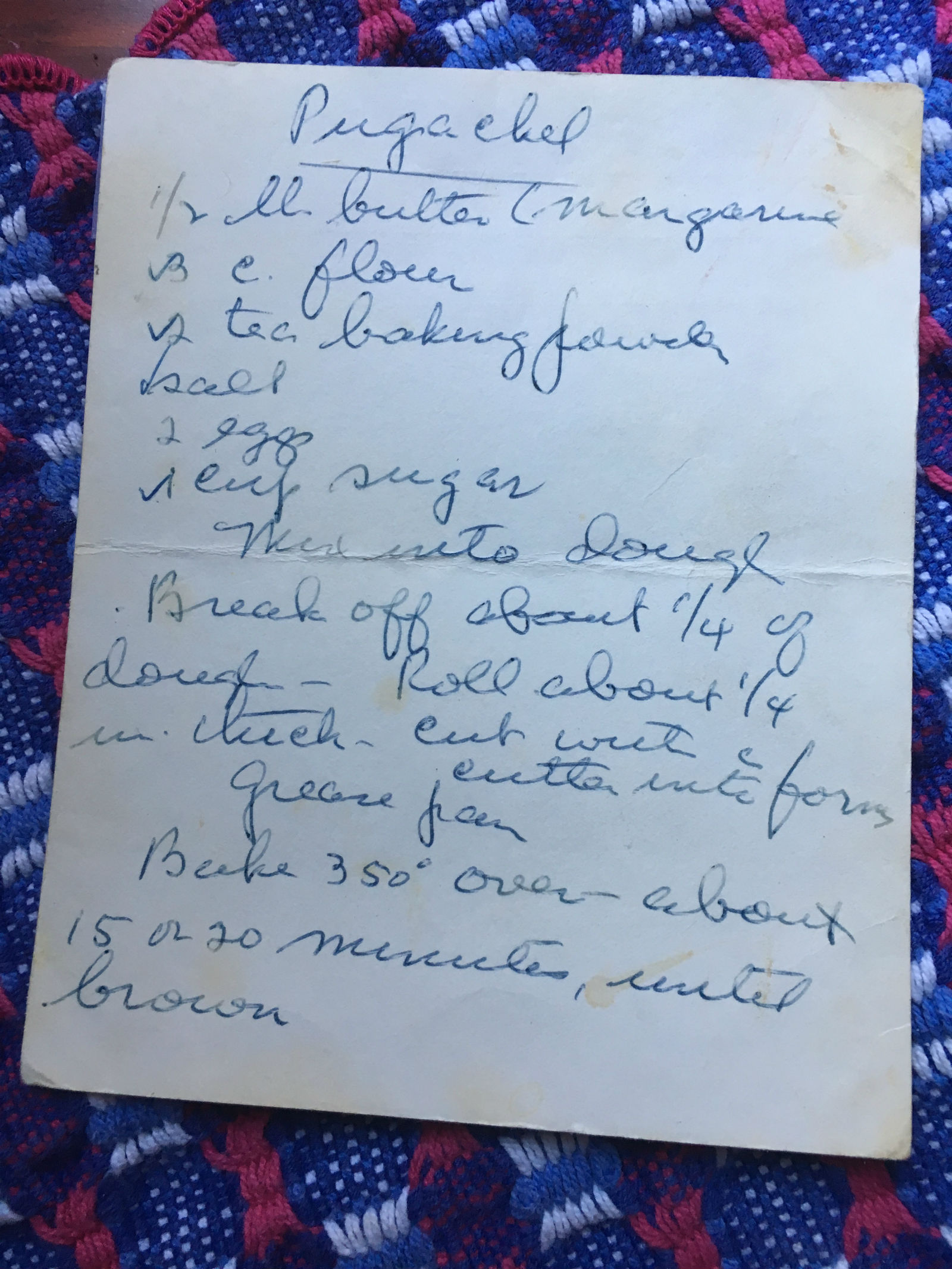
Upon closer examination, Henrietta’s handwriting, all curlicues and abbreviations, revealed a recipe for dough, but no fillings, and wait — the recipe didn’t say “Rugelach,” but “Pugachel.” Had my grandmother been dyslexic? What was this pugachel I’d never heard of?
Searching for pugachel on Google proved fruitless, so I turned to Henrietta’s recipe. It looked simple and efficient. I halved the ingredients and followed her flow, cutting out circles of sandy-colored dough, then baking for 15 to 20 minutes.
It was basically piecrust. A piecrust cookie. With way too much sugar. I could fix the sugar issue, but this revelation hit me hard. I knew the dough was dry while I was handling it, but I believed in the power of legacy — I was expecting a Henrietta delicacy, rich and mouthwatering, not overly sugary circles of borderline shortbread.
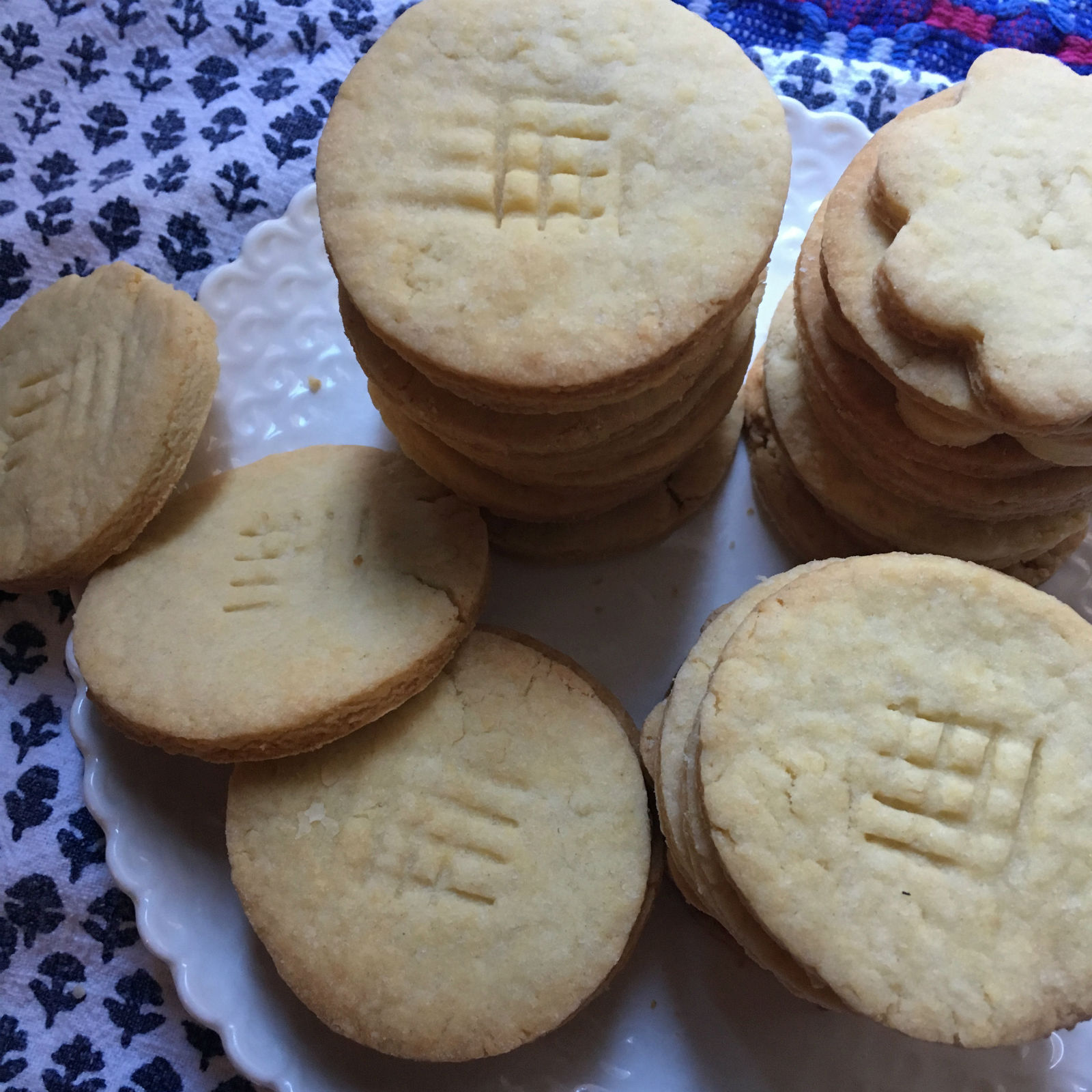
I quickly moved onto another recipe of hers, which sounded a bit more like rugelach: “Cream Cheese Dough for Rolled Cookies.” Yet after working with four simple ingredients that did not include sugar, egg, or liquid, my spirits sunk. I was confused. My sisters and I had grown up with Henrietta as the queen of the kitchen, the most wonderful baker. I wanted to will my pastry heirlooms into existence.
It took a bit of finessing to decipher her instructions, which were to roll out the dough, then cut it in triangles from the center, spread with jam, preserves, or sugar and finely chopped nuts, then roll up, and sprinkle sugar on top.
350 degrees F. Smelled delicious. Very buttery.
Twenty-one minutes later: again with the piecrust, albeit quite tasty, and rolled with raspberry jam. I wanted to laugh and call my sister, the one who’d sent me the recipe, or cry and call the other sister, but we had a new life now, apart from each other. I ate the raspberry jam-smeared piecrust cookies instead.
Maybe I had underestimated Henrietta, or misinterpreted. Maybe her quest for elegance, wherein she’d adorned both her body and apartment in gold, was because underneath, she’d struggled. At 16, she’d had to raise her younger siblings herself, and maybe piecrust cookies were her go-to in a pinch. Piecrust cookies have a contemporary following, as they offer near-instant gratification and are the perfect antidote for leftover dough. I should release past expectations, open my mind, and get on board.
I thought I knew my grandmother, had hit peak Henrietta understanding. But in my search for her rugelach, and a feeling of family, I realized I’d been resting on assumptions and exaggerated memory. I’m pleased I looked deeper into her handwriting, her recipes, her thought process, and I look forward to more unexpected findings from Henrietta. But I still miss her baked goods — the ones in my dreams.
Try your own hand at Henrietta’s pugachel cookies:
Ingredients
- 1/2 pound or 2 sticks butter or margarine, cold
- 3 cups flour
- 2 tsps baking powder
- pinch of salt
- 1 cup sugar
- 2 eggs, room temperature
Note: As written, this cookie is sweet, so feel free to lessen the sugar amount.
Directions
- Whisk flour, baking powder, salt, and sugar together in a bowl. Using an electric mixer, pastry blender, or two forks or knives, cut the butter into dry ingredients.
- Beat eggs and add to mixture. Continue mixing until dough comes together. The dough will be fairly dry, so finish combining with your hands. Pat into a ball, cover in plastic wrap, and chill in refrigerator for an hour.
- Preheat oven to 350 degrees F.
- Divide dough into 4 pieces. Working one at a time on a floured surface, roll out dough until 1/4 inch thick. Use a cookie cutter to cut out 2-inch circles. Optional: use a fork to create crosshatches.
- Place on greased or parchment-lined sheet pan, and bake for 15 to 20 minutes until nicely browned. Cool on rack.
